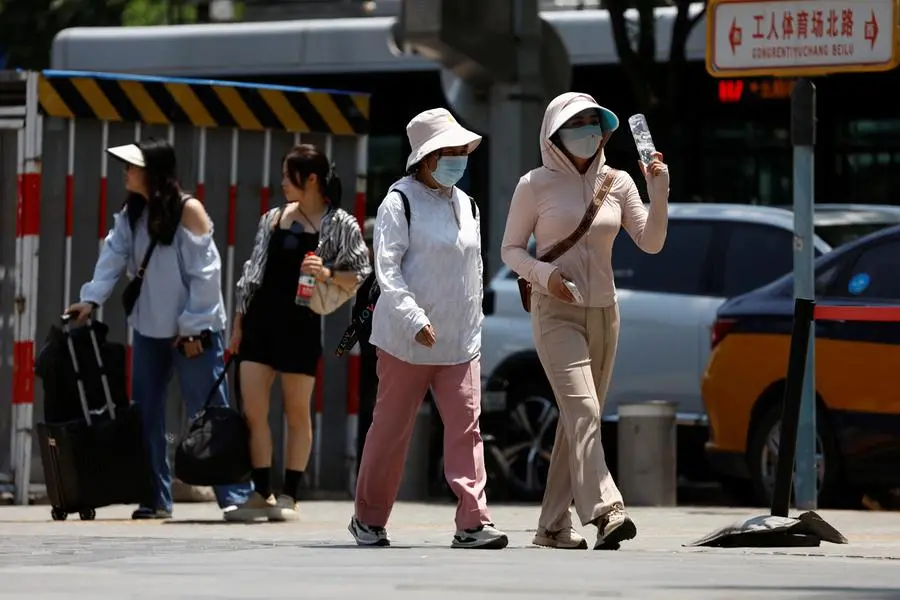PHOTO
(The opinions expressed here are those of the author, a columnist for Reuters.)
LITTLETON, Colorado - A heat wave across China, Japan, Taiwan and South Korea looks set to drive coal use for electricity generation to new highs over coming weeks, priming the region that accounts for more than 60% of world coal emissions to boost pollution further.
Authorities in Japan and southern China have recently called on households and businesses to curb power use to shield electric grids from further stress, but soaring temperatures are expected to bring greater use of power-hungry air conditioners throughout the region.
Forecasts for Beijing, Hong Kong, Japan, Taiwan and South Korea are all calling for temperatures well above local long-term averages in the coming weeks, according to Refinitiv data.
HOT ZONE
Areas around Beijing, Tokyo and Taipei will see temperatures that are 4% or more above the long-term averages throughout June, July and August, Refinitiv weather forecast data shows.
Seoul and Hong Kong are expected to post average temperatures around 3.4% above normal, which places all regions in the high 20s to low 30s Celsius range (80s to 90s Fahrenheit) during the summer.
If consistent through the coming months, the temperatures would be significantly higher than the already-elevated readings seen in these countries in recent years, and render daily life uncomfortable for many without the use of air conditioners.
China, Japan and Korea are all heavy users of air conditioners, accounting for just under half of installed global air conditioning units, according to the International Energy Agency (IEA).
And owners of aircon units can be expected to use them during oppressively hot periods, regardless of pleas from local authorities to conserve power use.
This means power producers will expect greater electricity demand over the coming months from homes, apartments and businesses, and rack up power generation fuels accordingly.
EMISSIONS TOLL
China produces roughly 60% of its electricity from coal, Japan and South Korea 30%, and Taiwan around 43%, according to think tank Ember, so coal will be a major driver of electricity generation in each country, especially at night when solar power production stops.
Collective emissions from coal-fired power generation in China, Japan, South Korea and Taiwan topped 4.9 billion metric tons of carbon dioxide (CO2) in 2022, and could surpass 5 billion metric tons in 2023 if high levels of coal use are sustained.
China is the main driver of regional and global coal use, and over the first half of 2023 it has lifted thermal coal imports by more than 70% from the same period in 2022, shipping data from Kpler shows.
Japan, South Korea and Taiwan have all reduced year-to-date coal imports compared to the same period in 2022, but China's sheer scale means its increased tonnage more than outweighs the decline in imports seen elsewhere in East Asia.
China's coal consumption will also set the overall tone for regional emissions, even if other countries continue to pare back coal use in power mixes.
That said, power producers throughout East Asia are expected to have little choice but to raise coal-fired power generation this summer as the entire region gets gripped by hot weather, and resume efforts to cut back on coal use only when demand levels ease off.
The opinions expressed here are those of the author, a columnist for Reuters.
(Reporting By Gavin Maguire; Editing by Tom Hogue)





















